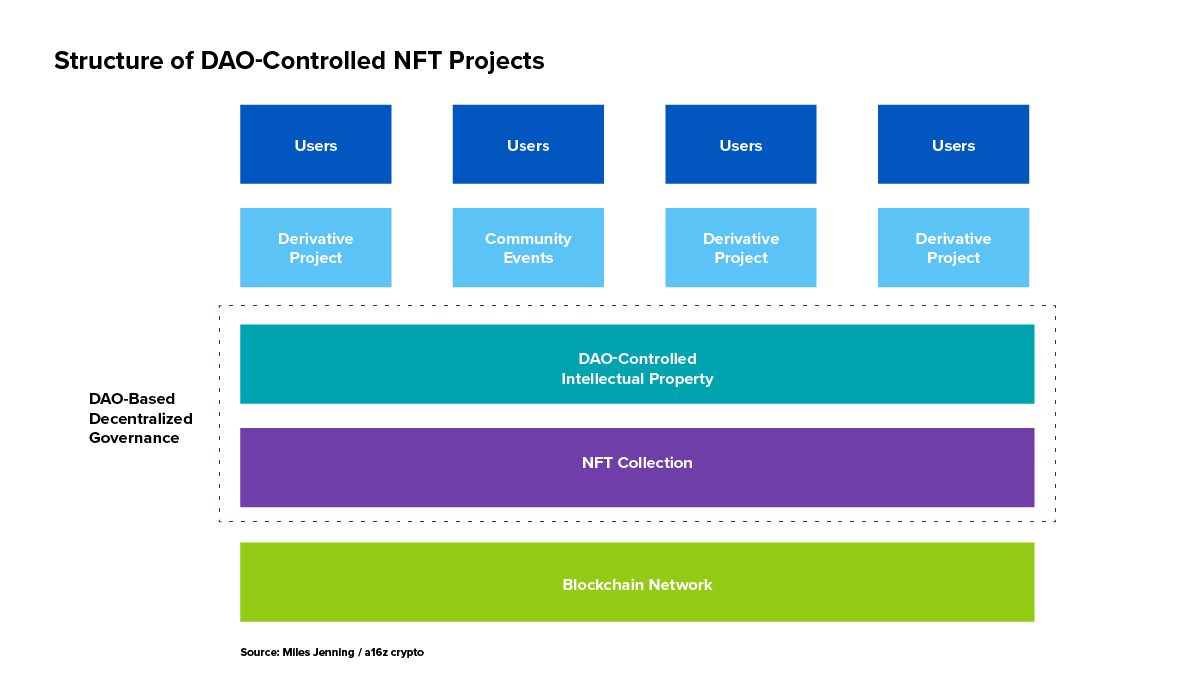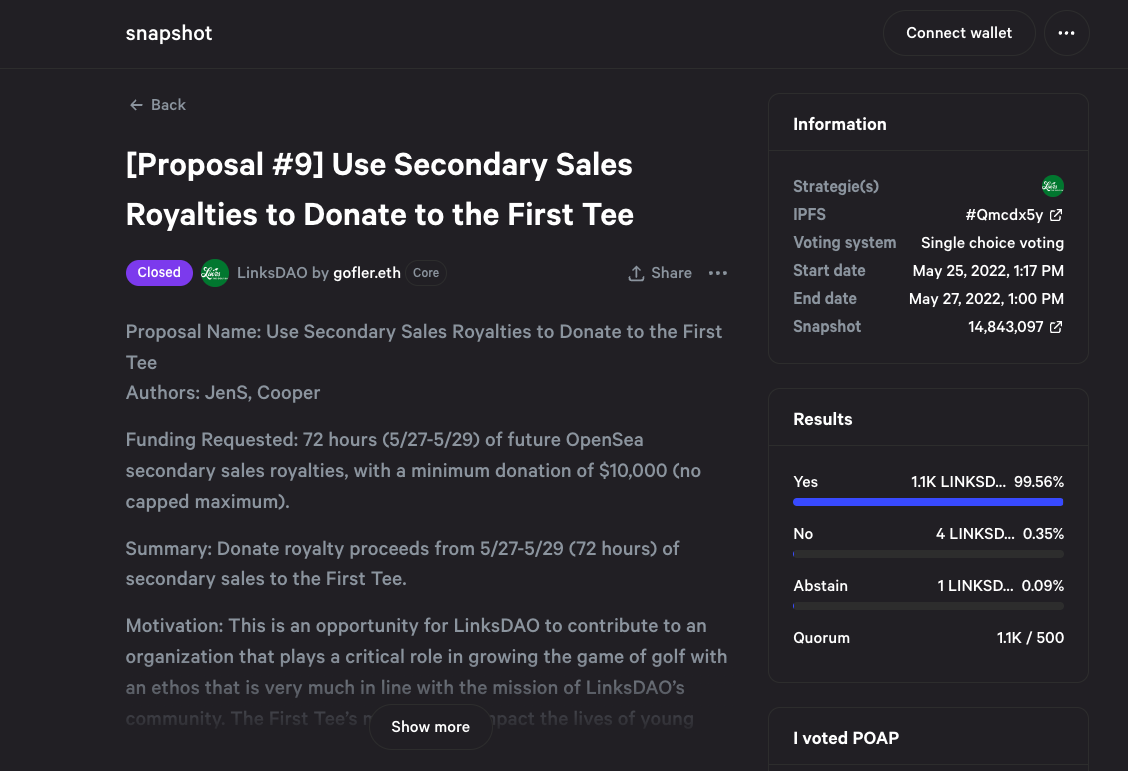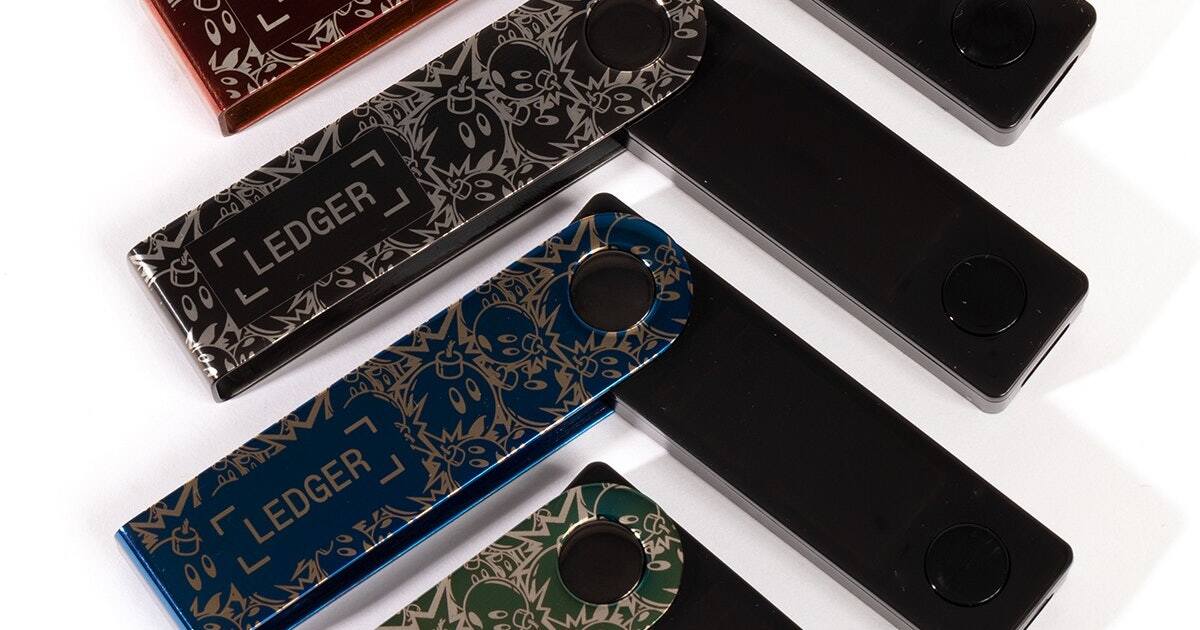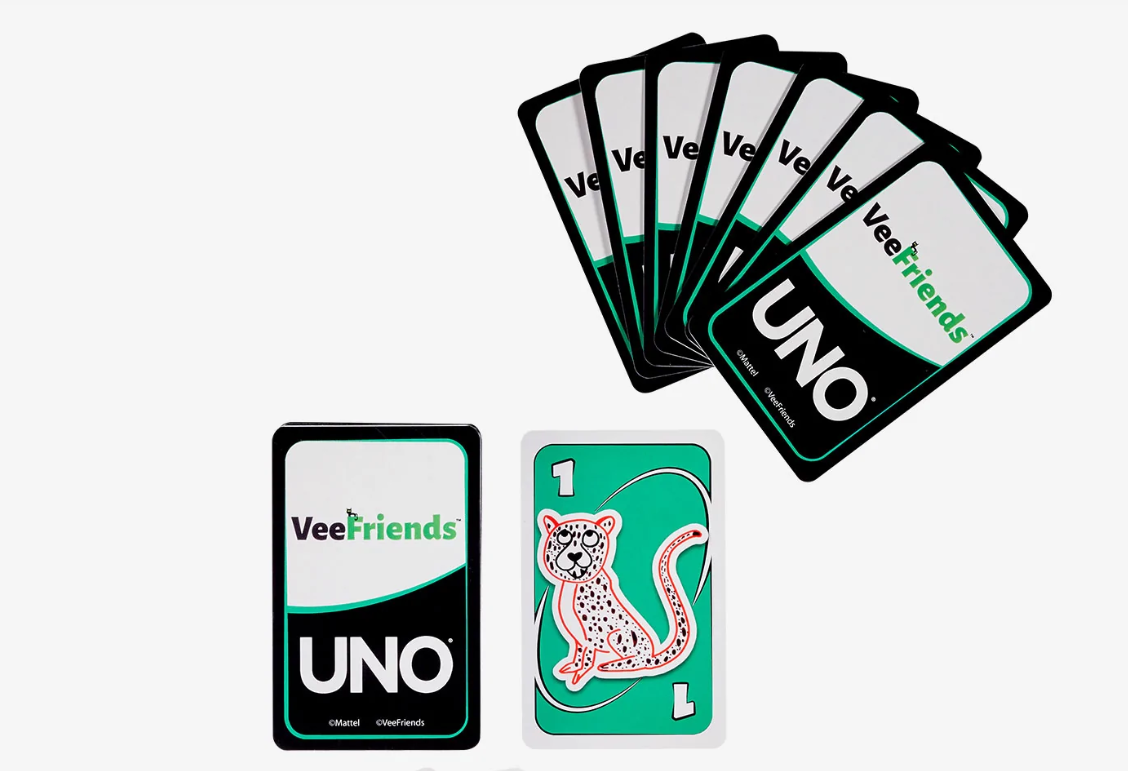As the NFT market has grown, with a number of larger projects reaching billions of dollars in sales volume within the last year, and others rising in influence, some of these projects have attracted quite a bit of attention from web3 and traditional companies alike (from hardware wallets to magazines and denim staples).
But for companies hoping to kick off a new partnership – to reach a new audience, experiment with a new technology, work together on a creative idea, or achieve any number of goals – it’s often unclear where to start. Some projects (like NBA Top Shot) began as brand-blessed partnerships. Many more started small – as zeitgeist-capturing memes, experimental artworks, or passion projects between friends – before evolving into full-fledged brands, built bottom up on vast, grassroots communities of NFT holders.
Just as some traditional customer acquisition frameworks are turned around in go-to-market for web3, builders may need to set aside more traditional forms of “outside-in” business development (like reaching out to the BD team with a perfectly crafted proposal) in favor of a more “inside-out” approach. By “inside-out” we mean getting to know a project’s mission or vision; building authentic connections rooted in community participation; and thorough research and philosophical alignment well before pursuing a potential partnership. This is true whether you’re selling a service (like tooling or infrastructure) or pitching an event idea.
NFT communities are not monoliths; they’re unique networks that differ tremendously in their missions, products, and organizational structures. Any outreach plan should reflect these differences. So in this post, we provide a framework for web2 and traditional brands navigating web3, as well as web3 teams dipping their toes into NFT partnerships for the first time. We begin with how to do this kind of research on the NFT projects (and communities) of interest, and then dive into a few ways to approach and pitch potential partnerships.
1. The foundations: From “Know Your Customer” to “Know Your Community”
Behind many popular NFT projects are teams, products, and tens of thousands of NFT holders, but you’re just as likely to find a single artist managing a tightly knit community. Research should always take these differences into account, extending the “Know Your Customer” standard of traditional business practice to “Know Your Community.”
Understanding the operations, mission, and people (both the creators and their communities) driving a project is a critical first phase. While most projects have founders and missions that set the tone for the culture and philosophy of their communities, it’s also important to think through more practical, or functional, parameters — like organizational and legal structures — to guide outreach and efficiently work out a partnership.
Understanding a project’s organizational and legal structure
The first step in learning about a project is finding its founder or founders. They will occasionally be the best point of contact, since most NFT projects don’t operate at a scale that warrants a specialized business development team. However, getting in touch (or even identifying) a web3 founder is often not as straightforward as looking at an “about us” page.
Founders may be anonymous, pseudonymous, or provide little information about their backgrounds beyond a Twitter handle. But even when founders choose to remain anonymous, they’re often very much involved in the direction of the project and its community.
NFT communities can also vary in organizational and legal structures that can have widespread implications for a potential partnership — including how to reach out, the type of partnership available to pursue, and other parts of the process that might be easy to take for granted when working with traditional organizations. For example, a project may rely on a decentralized autonomous organization (or DAO) for decision making without a formal legal entity; critically, projects that aren’t organized into formal legal entities may not be able to sign certain paperwork, like non-disclosure agreements, or NDAs.
 Organizational structures can also tell us who to reach out to, and who’s responsible for making partnership decisions (which is not always clear given the decentralized and distributed nature of DAOs). For example, a DAO might govern the intellectual property, or trademarks, of a given NFT project (Miles Jennings, a16z crypto general counsel, has written extensively on this topic).
Organizational structures can also tell us who to reach out to, and who’s responsible for making partnership decisions (which is not always clear given the decentralized and distributed nature of DAOs). For example, a DAO might govern the intellectual property, or trademarks, of a given NFT project (Miles Jennings, a16z crypto general counsel, has written extensively on this topic).
DAO governance may also mean that NFT holders need to vote on any partnership proposals the project receives. In this case, potential partners may end up actively campaigning for NFT holders to vote in favor of their proposal. There are a variety of partnerships proposed and publicly voted on through Snapshot — a public voting tool for DAOs — from LinksDAO charitable partnershipsto MutantCats B2B partnerships. Many business-development-related pitches may need to follow similar steps if seeking a partnership grant from a DAO. NounsDAO, for instance, has grants that anyone, including potential partners, can propose through Prop.House.

Majority vote approved, via Snapshot, a recent LinksDAO proposal to donate royalty proceeds from 72-hours of secondary sales to the First Tee charity, a youth development organization oriented around the game of golf.
In other cases, outreach won’t need to start with creators at all. Individual members of some communities will have commercial rights to the artwork used in the NFTs they own, which means that owners (or their organizations) can enter into separate partnerships. Owners of Bored Ape Yacht Club (BAYC) NFTs, for example, have independently spun off a slew of projects; recently, web3 purveyors of IRL libations Ape Beverages announced a “casting call” to license apes from the community to feature on its cans of spring water (more on how NFT licensing works in this post). Depending on the NFT project, there may be a spectrum of community members with various goals and opportunities to research.
Other projects will have outside representation (including agencies like Creative Artists, United Talent, or WME). When working with agents or other third parties, it’s helpful to break down what each stakeholder does. For example, a talent agency who represents a specific artist will likely also represent the artist’s business interests, including NFT projects. In this case (regardless of whether you’re pursuing events, marketing, or merchandising partnerships) you’ll need to negotiate with the agency and not the artist or project.
Questions to ask and answer
- Who are the project founders or leaders? Is project leadership public?
- Does the project have a formal legal entity?
- Does the project have outside representation (for example, an agent)?
- How decentralized has decision making become, and who makes decisions? Are decision makers organized into traditional hierarchical structures or as a DAO?
- Does the project have a person or team responsible for partnerships?
- Does the project issue partnership grants and have a formal process for applying for those grants?
Getting to know a project’s mission
Many founders have post-mint missions like using blockchains to support a cause, or to transform how fans engage with artists. These underlying motivations are important to work into the ethos of any outreach, but (like in traditional business development) those seeking web3 partnerships should always dig deeper than marketing copy or common banner statements like “onboarding the next one billion users.” Reaching beyond the most obvious assertions can add depth to your proposal.
Fortunately more information is generally available with some thoughtful research. Thanks to the open source nature of web3, many of these projects are discussed and developed in public. People seeking partnerships can join a Discord server (usually posted prominently on the project’s websites) and follow the community on Twitter, including listening in to conversations in live public audio in both these spaces and more. They can also dive into other content (podcasts, blogs, whitepapers, or even public governance votes); or attend events, both virtual and IRL.
Many NFT projects use these platforms to not only communicate casually but also to more formally define goals, share milestones, and set expectations across their communities. Any concrete project plans – drops, launches, events, and more – that support the project’s vision can give you an idea of where your ideas may add the most value.
Yuga Labs (the original creators of Bored Ape Yacht Club), for example, released a litepaper laying out their vision for Otherside, a “world-building metaverse platform,” where community members (or Voyagers) can create, play, and interact with one another and the land they’ve purchased. Improbable, a developer of mass-participation technology, was a logical fit to develop the Otherside metaverse, giving thousands of Voyagers access to the virtual world, and shaping web3 through storytelling, experiences, and community. This type of open and decentralized building fosters organic growth by encouraging independent third parties to develop metaverses, products, and services tailored for the community, creating (in a sense) opportunities for permissionless partnerships.
Questions to ask and answer
- What is the purpose and mission of the NFT community?
- What are some major project goals and milestones?
2. Bring partnership ideas to life with smart and measurable goals
NFT projects are often just a single artist or small team juggling multiple interests at once — community expectations and engagement, creative development, marketing, and more. Having partnership goals that are specific, measurable, achievable, relevant, and time-bound (or SMART, according to one common framework) can help make the most of a project’s time.
Building relevance and authenticity
First it’s important to weigh how relevant a partnership is to a project or community and, critically, what is and isn’t actionable for them. For example, if a potential partner is seeking an exclusive merchandising opportunity, they may not want to approach an NFT project that uses the Creative Commons Zero (CC0) license. These creators can’t entertain exclusive opportunities, because they’ve explicitly chosen to waive their copyright and open their projects to the world.
Most NFT projects are relentlessly focused on their communities, which are often made up of passionate crypto enthusiasts and blockchain early adopters. Whether a brand collaboration or licensed product, authentic partnerships that speak to these communities and encourage their participation will go farther than a logo-slap can. When VeeFriends and Mattel released a web3 version of the 90’s classic card game UNO, for example, they combined the game’s nostalgic mechanics with rare VeeFriends cards to “bring NFTs to life” (which has more recently grown through a new partnership with Toys ‘r’ Us and Macy’s).
Successful partnerships build on the value a community already enjoys. For instance, when hardware wallet provider Ledger partnered with Adam Bomb Squad founders The Hundreds, the teams co-created an exclusive run of its Nano X featuring a print inspired by the project’s Adam Bomb. As part of the release, holders were gifted custom wallets based on their respective NFT traits — providing physical security for the community’s digital assets while using NFT ownership as an invitation to extend the cachet of holding an Adam Bomb Squad NFT.

Exclusive Nano X Ledger wallet featuring the Adam Bomb print were produced in colors corresponding to certain NFTs “Sticker” traits (Adam Bomb Squad #17740 with Green Sticker shown at right via OpenSea) (photo credit: Input Mag)
Supporting goals with measurable results
Proposals are stronger when they include clear metrics and measurable outcomes. Many NFT projects have fairly well-defined revenue streams including primary and secondary sales, gross sales on merchandise and events, and guarantees from licensing. Being able to communicate how a partnership can contribute to the project (e.g., revenue) or its community will strengthen a proposal’s case, whether using verified data or more general case studies.
Questions to ask and answer:
- Does the project provide utility? Examples include rewards (staking), physical/IRL (merch, events), or engagement (games, virtual events, metverse)
- What value could your proposal bring to the project and, more importantly, its community?
- What is your proposed revenue agreement, and how does that impact the project’s existing revenue sources?
3. Prioritize outreach: A framework for finding the right fit
After researching and setting goals, there’s one more step before getting started: prioritizing outreach. We recommend categorizing NFT projects with labels like type (art, sports, music), artistic styling, community size, floor price, target audience, utility, and more; and then ranking individual projects based on how impactful a partnership may be rather than generating the same “most popular project” list that everyone else has.
This exercise can also bolster ongoing research: In NFT partnerships, it’s important to not only know how to join a community but also to be able to build relationships at the project level. Ideally, those seeking partnerships can match their organizational objectives with those of the NFT community to create a relevant partnership that benefits both brands.
While Deadfellaz would certainly find its place on many “most popular project” lists, its collaboration with Wrangler Jeans highlights this framework. After launching Wrangler Reborn, a collection of vintage items from its storied past, the company tweeted its new partnership with Deadfellaz, whose “artwork and brand” perfectly co-mingled with Wrangler’s creative concept. With the right message and artistic styling for their intended audience, Wrangler and Deadfellaz produced a collaboration that was not only mutually beneficial but also bridged the gap between web2 and web3 in a way that’s authentic to each brand.
4. Build relationships by joining the community
With priorities in mind, it’s time to reach out. If a project doesn’t have an agent or other outside representation, finding the right decision makers isn’t always straightforward. Getting in touch often starts with joining and participating in the community itself, usually by becoming an NFT holder, so let’s look at a few ways to get involved.
To buy or not to buy
NFTs often serve as a sort of entry pass to their respective communities, and as such, can open up new ways to communicate, participate, and get to know potential partners. Of course holding a project’s NFT doesn’t guarantee a partnership (nor is it necessary to start building a relationship), but it can help.
Teams that see cost as a barrier to entry might also choose to: (1) pool resources as a group through protocols like PartyDAO; (2) borrow funds through lending platforms like Aave, Compound, or TrueFi; (3) use point-of-sale financing services like Halliday or Teller; (4) rent the asset using platforms like reNFT or Vera; (5) simply reach out to an existing NFT holder (via Twitter verified) to learn about their community without purchasing an NFT.
Communication best practices
No matter the approach, it’s important to read the room before posting anything. Twitter, Discord, Farcaster, and other project-level governance forums are shared, open channels, so be prepared to write something that is effectively public and to answer questions in real time (leaving outreach open ended will help encourage a live discussion). Anyone seeking a partnership should follow applicable community norms and guidelines, and be sure their tone matches the general tone of the community’s chatter. Otherwise, messages could go unseen, fall flat, or worse, derail a partnership.
On Discord, some communities have clear rules of engagement, like posting to their #general channel with a message for the Moderators or Community Managers, or in an individual channel such as #partnerships or #ideas with your proposal. When it’s not clear or not possible to get in touch with Moderators or Community Managers, (for example, when individuals turn off DM’s to prevent scammers from contacting them), opening a support ticket may help.
Building connections, IRL
For those that prefer in-person conversations, crypto has a packed itinerary of dedicated conferences and industry events (and has also started crashing parties in the art, music, and fashion worlds). Explore conference-specific side events by being part of the community, or by checking out Telegram groups.
Finally, as more NFT founders announce outside investments in their communities, investors, if applicable, may be able to provide an introduction or help make a connection. No matter the strategy, it’s important to start relationships with specific goals, a nuanced understanding of the NFT project, and a clear idea of what a partnership can bring to the project’s community.
***
Delving into NFTs can be a novel, empowering, and deeply fun experience of ownership, community, and creative expression. The motivations behind each project (though unique) are commonly rooted in a deep conviction in the technology and its ability to serve a broader purpose. Channeling the goals of your own organization, and then learning what drives a given NFT community, can bring out the best in your partnership, ensure it’s successful for both you and the NFT project, and create a product that’s singularly impactful.
***
The views expressed here are those of the individual AH Capital Management, L.L.C. (“a16z”) personnel quoted and are not the views of a16z or its affiliates. Certain information contained in here has been obtained from third-party sources, including from portfolio companies of funds managed by a16z. While taken from sources believed to be reliable, a16z has not independently verified such information and makes no representations about the current or enduring accuracy of the information or its appropriateness for a given situation. In addition, this content may include third-party advertisements; a16z has not reviewed such advertisements and does not endorse any advertising content contained therein.
This content is provided for informational purposes only, and should not be relied upon as legal, business, investment, or tax advice. You should consult your own advisers as to those matters. References to any securities or digital assets are for illustrative purposes only, and do not constitute an investment recommendation or offer to provide investment advisory services. Furthermore, this content is not directed at nor intended for use by any investors or prospective investors, and may not under any circumstances be relied upon when making a decision to invest in any fund managed by a16z. (An offering to invest in an a16z fund will be made only by the private placement memorandum, subscription agreement, and other relevant documentation of any such fund and should be read in their entirety.) Any investments or portfolio companies mentioned, referred to, or described are not representative of all investments in vehicles managed by a16z, and there can be no assurance that the investments will be profitable or that other investments made in the future will have similar characteristics or results. A list of investments made by funds managed by Andreessen Horowitz (excluding investments for which the issuer has not provided permission for a16z to disclose publicly as well as unannounced investments in publicly traded digital assets) is available at https://a16z.com/investments/.
Charts and graphs provided within are for informational purposes solely and should not be relied upon when making any investment decision. Past performance is not indicative of future results. The content speaks only as of the date indicated. Any projections, estimates, forecasts, targets, prospects, and/or opinions expressed in these materials are subject to change without notice and may differ or be contrary to opinions expressed by others. Please see https://a16z.com/disclosures for additional important information


